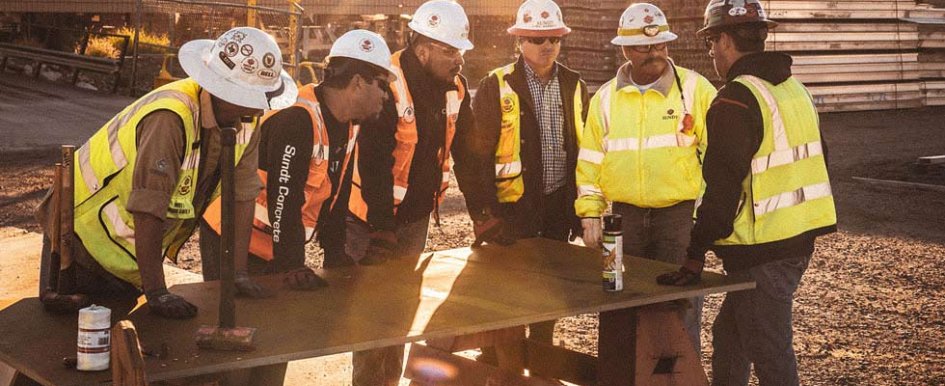
The construction industry has been experiencing labor shortages for some time, but as we enter 2022, the industry is finding obstacles and challenges like never before in hiring and retaining a skilled workforce. As contractors gear up for another year of accelerated growth, 74% of construction firms plan to hire.
When the jobs don’t get filled, business owners must spend exorbitant amounts of money and resources hiring and are forced to make the difficult decision between finishing a project on time or on budget.
The reality is, finding qualified talent is not something that can be done reactively anymore — gone are the days of quickly backfilling a skilled journeyman. It is imperative to build a proactive hiring strategy with multiple layers to be competitive.
This takes consistent time and effort, but the benefits can catapult your company to success.
Here are a few considerations in developing a proactive hiring strategy that will help you finish projects on time, stay out of the red and create teams of hardworking, loyal employees.
1. Training & Upskilling
To really see a long-term pipeline of qualified workers, you should be thinking about your company’s training and upskilling opportunities. Having a strong training program can attract more culturally driven hires and individuals looking for a career, not just a job. This is a shift that takes time but that creates retention and more payoff in the long run.
Start by figuring out a focused training program for those coming in. If you’ve noticed a gap in foremen but have new hires with strong soft skills and other transferrable skillsets, that may be a good place to begin.
Always be sure to establish clear, attainable goals, objectives and pay raise opportunities, and give feedback along the way to your employees so they know how they’re doing.
Investing in your employees’ training creates loyalty, and it gives them the training and path to progress they’re looking for in a job.
Don’t stop there either. More business owners are finding themselves personally networking with local trade schools and even high schools to plant the seeds of what a meaningful career looks like in the construction industry and skilled trades.
See what you can do to partner with these schools and shop classes on upskilling. It’s not a short-term play, but a few years from now you may find yourself tapping into a new generation of hungry, skilled workers excited to work for your company.
2. Referral & Bonus Programs
Your current employees can make or break your workforce. The key is to make sure they want to refer their friends and family in the first place.
If you’re not seeing referrals from your current employees, first make sure you are offering a competitive job and a workplace your employees love.
While you can’t change the job itself, make sure your employees feel safe, valued and properly compensated, and offer opportunities for advancement when possible.
When you think about the incentives you offer to your employees, a simple one is allowing employees to work with people they know. This line of work has always been built on relationships and trust, and it’s that much more rewarding to refer a friend knowing you’ll be working alongside them if they’re hired. Financial incentives can be very effective, and most successful referral programs involve them to some degree.
You can keep it simple. Offer monetary bonuses to employees who refer people that get hired and stay on the job for a certain amount of time.
Attendance-based bonuses can also help give you a boost during peak project time frames. In the construction industry especially, offering monetary bonuses for attendance could be the differentiator between a wasted day and a fruitful day on-site. Consider piloting this to workers who show up 90% of their days per month and see if it works for you.
3. Always Be Recruiting
The truth is these strategies take time and effort on a regular basis, not just when a few hours can be spared here and there.
It can take several times as long to recruit the same people today as it did several years ago, and it can prove costly to recruit new talent alongside all the other responsibilities of managing a successful construction project.
The key to effectively executing your well-thought-out strategy is to always be recruiting. Some ways to do this include forming strong partnerships with subcontractors so you have a partner on projects and having your inhouse recruiters or human resources (HR) constantly looking for good talent.
If you lack the resources to do this, you may want to consider working with a third party to be strategic about planning for staffing needs. They have the data available to help understand holes that need to be filled in your current hiring strategy, and they are practiced in developing both short- and long-term solutions to do so.
You don’t want to get caught in a place where you are constantly reacting. Take the time now to plan on the front end. Gather the data you need to make educated decisions on your hiring strategy, understand what resources and programs are needed to implement it, and then figure out a way to make it happen.
